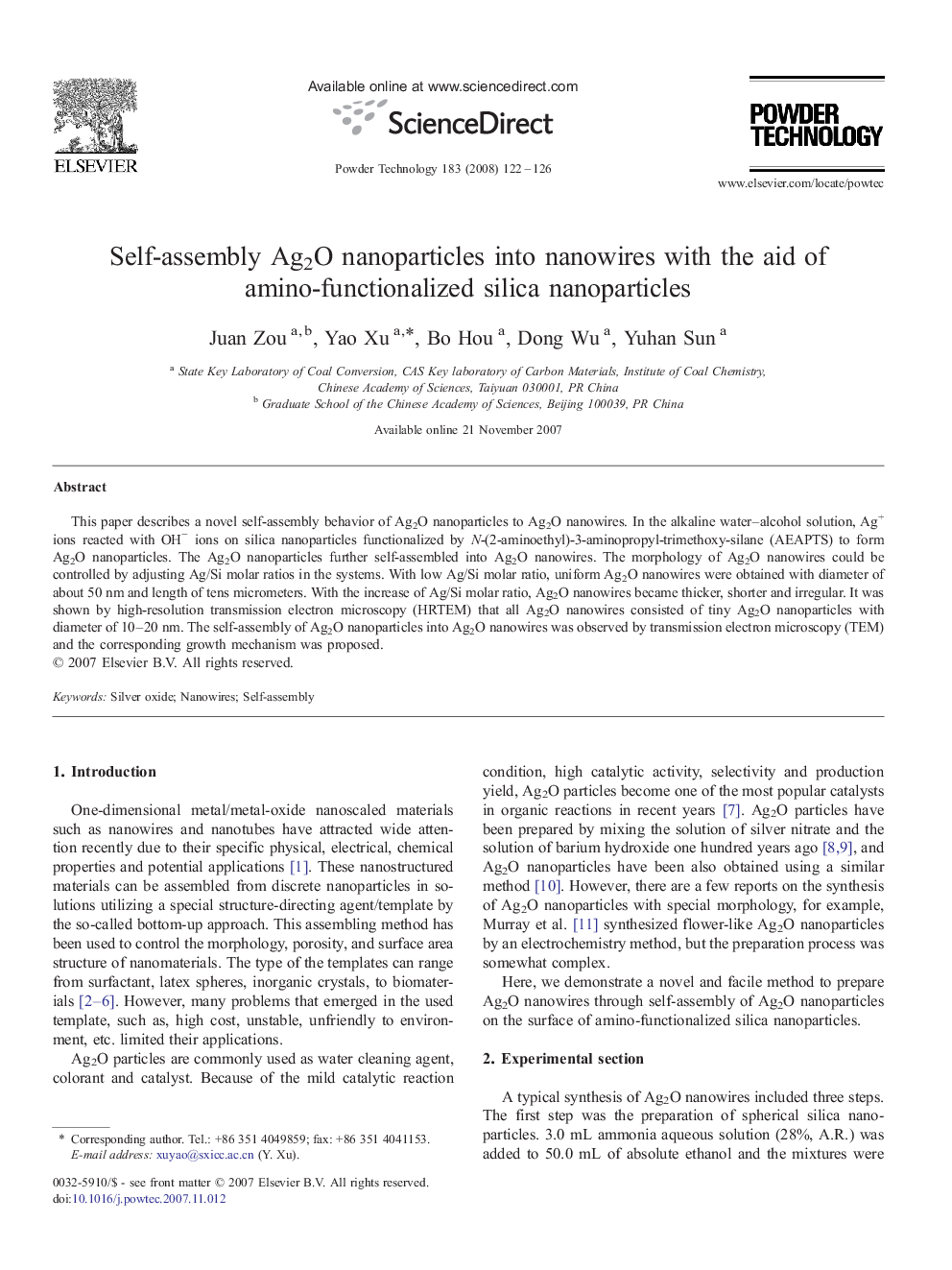| Article ID | Journal | Published Year | Pages | File Type |
|---|---|---|---|---|
| 238528 | Powder Technology | 2008 | 5 Pages |
This paper describes a novel self-assembly behavior of Ag2O nanoparticles to Ag2O nanowires. In the alkaline water–alcohol solution, Ag+ ions reacted with OH− ions on silica nanoparticles functionalized by N-(2-aminoethyl)-3-aminopropyl-trimethoxy-silane (AEAPTS) to form Ag2O nanoparticles. The Ag2O nanoparticles further self-assembled into Ag2O nanowires. The morphology of Ag2O nanowires could be controlled by adjusting Ag/Si molar ratios in the systems. With low Ag/Si molar ratio, uniform Ag2O nanowires were obtained with diameter of about 50 nm and length of tens micrometers. With the increase of Ag/Si molar ratio, Ag2O nanowires became thicker, shorter and irregular. It was shown by high-resolution transmission electron microscopy (HRTEM) that all Ag2O nanowires consisted of tiny Ag2O nanoparticles with diameter of 10–20 nm. The self-assembly of Ag2O nanoparticles into Ag2O nanowires was observed by transmission electron microscopy (TEM) and the corresponding growth mechanism was proposed.
Graphical abstractThis research described a novel self-assembly from Ag2O nanoparticles into Ag2O nanowires on the effect of silica nanoparticles surface-functionalized by N-(2-aminoethyl)-3-aminopropyl-trimethoxysilane (AEAPTS). The morphology of Ag2O nanowires can be controlled by adjusting the Ag/Si molar ratios in the reactants. All Ag2O nanowires consisted of tiny Ag2O particles with diameter of 10–20 nm. The corresponding growth mechanism of Ag2O nanowires was proposed.Figure optionsDownload full-size imageDownload as PowerPoint slide
